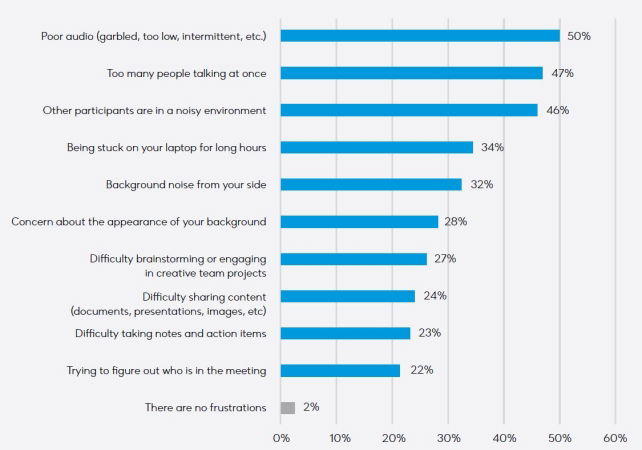Here’s how you can make the HR leader’s decision on vendor selection a little easier.
IR and Ecosystm have launched a hybrid workplace guide, called Your ultimate guide to future-proofing the hybrid workplace 2.0which explores how organizations can consider employee preferences by listening to their feedback, and deliver a more engaging and efficient hybrid work model.
In this article, we’ll adapt some of the research findings around simplifying the hybrid workplace by ensuring all collaboration tools work seamlessly and are geared for employees to deliver performance; thus helping to make the HR leader’s decision on vendor selection a little easier.
Centralization of tech tools
It would be an understatement to say that IT teams are under an enormous amount of pressure. With many organizations moving to a multi-vendor unified communications (UC) environment and the challenge of disparate devices and locations, technical staff now need to look in more places to track down the cause of quality and performance issues. Finding the root cause of problems is almost like looking for the proverbial needle in a haystack. Thus, it would be helpful to have a software that can see everything in your hybrid UC ecosystem.
When working from home, what are the biggest frustrations during video meetings?

Making use of data and analytics
Meeting the needs and preferences of employees requires using data and monitoring technology to measure performance and experience. The insights gained from collecting data and studying analytics help organizations to understand where systems need attention from a tech point of view. But data and analytics do much more than that. They can monitor employee performance, identify strengths and weaknesses, levels of satisfaction, and engagement with technology applications.
In a nutshell, data always tells a story. It’s not enough just to collect data; organizations have to understand it in order to make it work for them. Harnessing detailed information through analytics gives service providers and enterprises the support and solutions they need to improve infrastructure, billing, collaboration, and security. Data provides clarity on what is happening, giving leaders crucial insights that result in better, more structured policies.
As well as utilizing enterprise-wide data, companies also need to facilitate data literacy. Regular and persistent training should be put in place so that employees can read, understand, question and challenge data.
Managing performance and experience
A hybrid workplace can help build a crisis-resilient culture by allowing increased freedom, autonomy and flexibility within an organization while maintaining structure. But hybrid working comes with some fundamental flaws from a technical point of view. Its technical issues include:
- Inconsistent quality of remote network connections,
- In-office corporate networks not equipped to handle increased demands of hybrid work, particularly video,
- Incompatible devices,
- Sub-par audio and video,
- Workspaces not optimized for hybrid collaboration – both home workspaces and in-office meeting spaces,
- Security risks when faced with managing multiple devices and networks, and
- The absence of immediate on-site technical support.
Downtime caused by malfunctioning or underperforming equipment or poor connectivity makes for a frustrating and potentially costly user experience. The disparate nature of hybrid working means that a UC environment could consist of dozens or even hundreds of different applications, devices, networks and locations.
It is the job of IT leaders, working together with HR leaders, to simplify complexity and ensure all collaboration tools work seamlessly to succeed in the hybrid workplace.
Lead image / Shutterstock
In-line image / IR and Ecosystem report
Follow us on Telegram and on Instagram @humanresourcesonline for all the latest HR and manpower news from around the region!
.